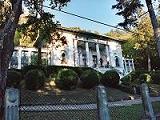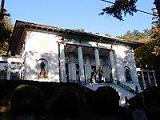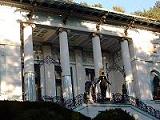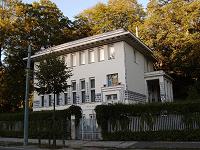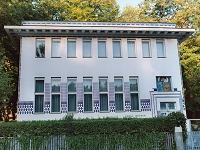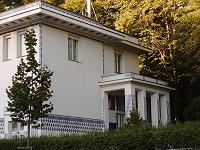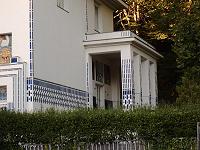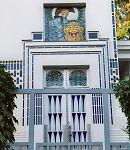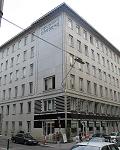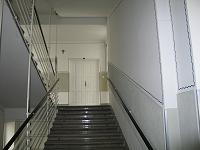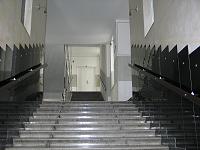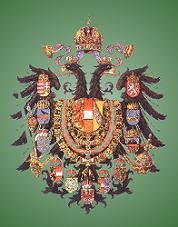The Belle Epoque in Europe
Austria
Vienna: Otto Wagner (1841-1918) I
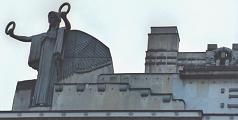
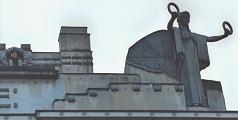
Villa Wagner I and II
How an architect's style may develop in the course of an era as exciting as the Belle Epoque, one can observe very good by following the work of Otto Wagner (1841-1918), especially by comparing the two neighbouring villas on the Hüttelbergstraße in the XIVth district (Penzing). Wagner, having started his architectural studies in 1857, was (and still is) the most famous Viennese architect of his time; he built the first villa in 1886 and the second one in 1912/13.
Villa Wagner I (1886)
Wagner built this villa in a historic style on the edge of the Hütteldorf forest to live there himself; here, symmetry is dominant. The only concession to the new trends in architecture is the using of iron for the banisters of the magnificent stairs. The square building in the centre is flanked by two pergolas and dominated by a loggia built of four enormous columns.
Villa Wagner II (1912/13)
In 1905 already, for his architecture lessons, Otto Wagner designed a first draft of this villa which he later built slightly changed;
he wanted his wife Louise, 18 years younger than him, to live there after his death, but she died in 1915, three years before him, in the
villa, so Wagner sold the house.
Between the first villa and this here lies a quarter of a century of experience and developement. You notice at once the development from
neo-renaissance to modern architecture, from historicism to autonomous decoration (Ottokar Uhl), made possible only by the changing of the
construction technique. The cube shaped building, with its small, high and rectangular openings, makes us guess the construction of reinforced
concrete. The roof ledge, still alluding to the renaissance, is drawn down "like the brim without the hat" (Friedrich Achleitner).
The decoration is confined to thin stripes of blue glass and aluminium nails on the edges underlining the main floor. The window above the
entrance showing Perseus with the head of Medusa was designed by Kolo Moser
and created by the Wiener Mosaikwerkstätte (Vienna Mosaics) of
Leopold Forstner.
Post Office Savings Bank (1904-1906)
Here you find a Virtual Tour

© kuks Hannover
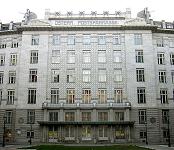

© kuks Hannover
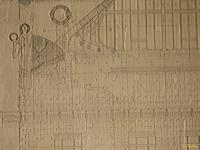
© kuks Hannover
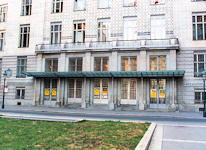
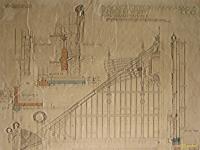
© kuks Hannover
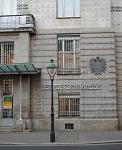
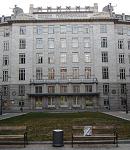

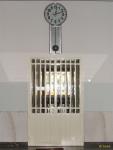
© kuks Hannover
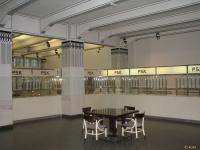
© kuks Hannover
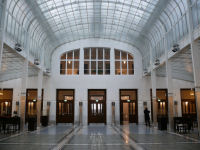
© Thomas Ledl, Wien
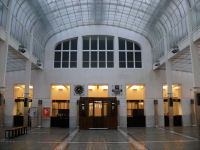
© Thomas Ledl, Wien
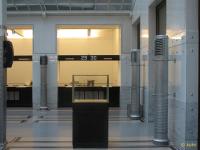
© kuks Hannover
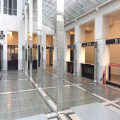
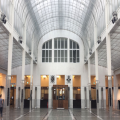

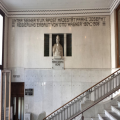
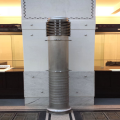
"Nothing of the Post Office Savings Bank reminds us of the 'free Renaissance'. No reminiscences of historical styles, no palazzo architecture, no monumentality from the treasury of tradition, but everything is functional. The question of material comes to the fore. Iron concrete, glass, marble, aluminium, hard rubber and so on, these are the elements the building consists of. Nothing but new words! No architect would have thought about it at the time when the Länderbank1) was built. Otto Wagner discovered it. Even if he did not invent these materials, he gave them, however, their actual meaning; he discovered their use for the architecture." (Joseph August Lux, Otto Wagner, Munich 1914)
1) Built in 1884 by Otto Wagner in a representative historical style, today Federal Chancellery of Austria
